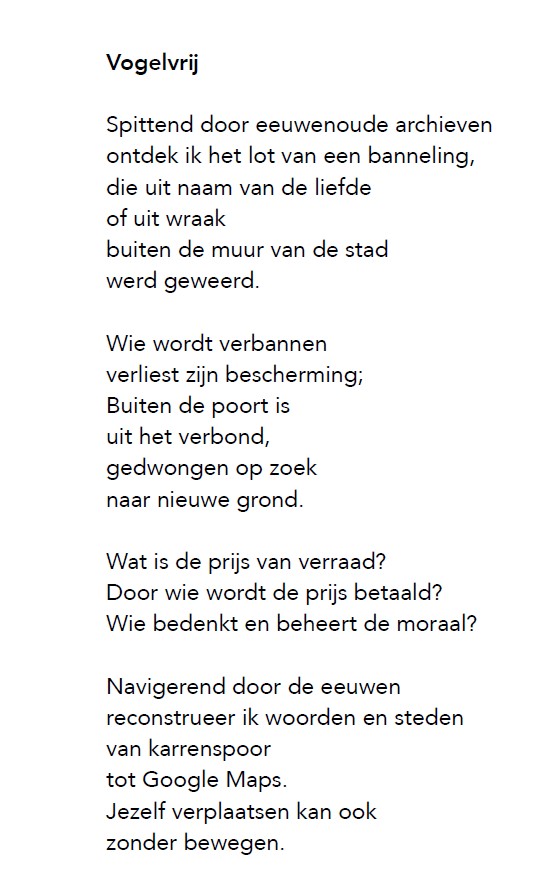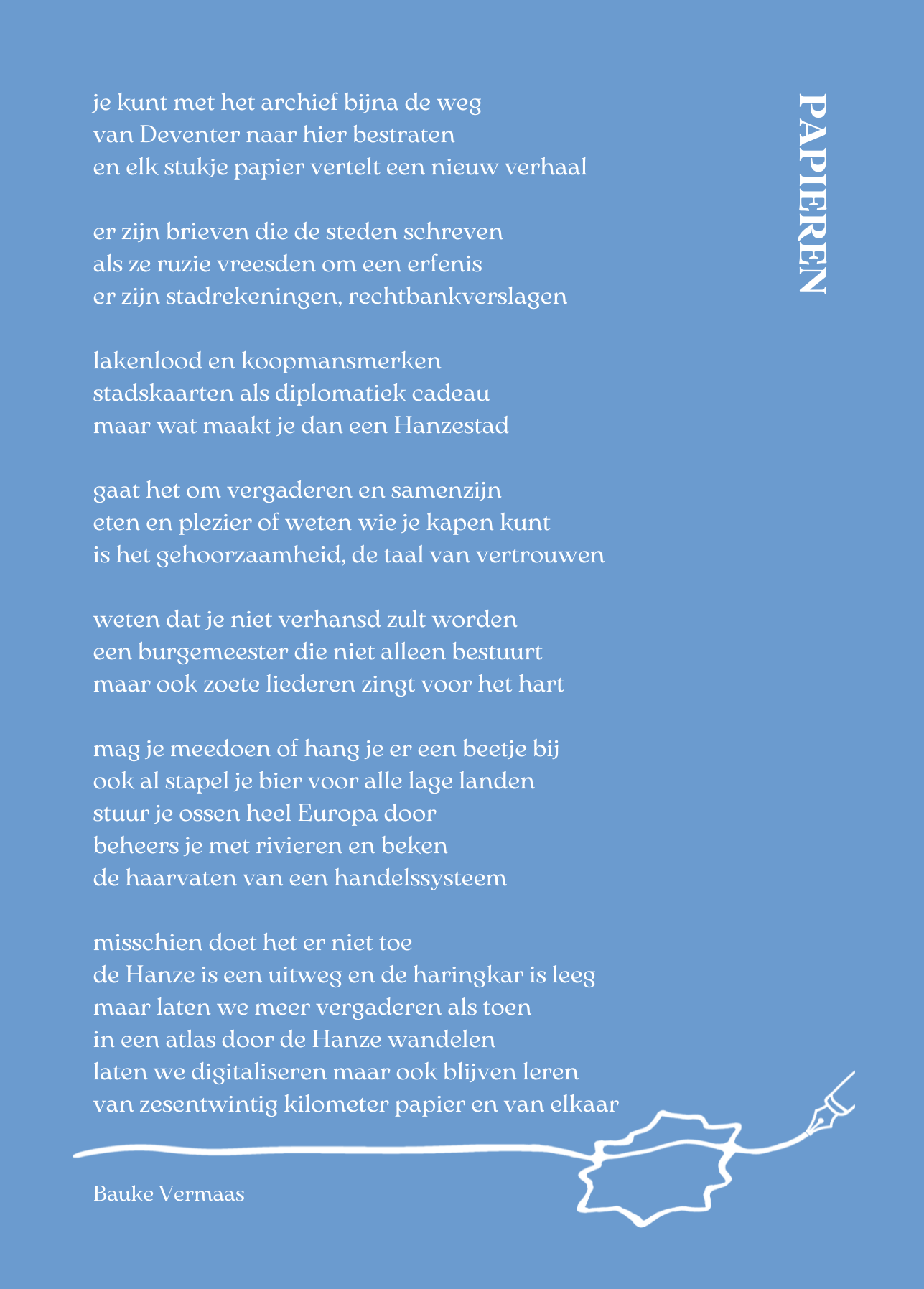PhD Defense!
Justyna Wubs-MrozewiczExcellent PhD defense by team member Christian Manger:
‘Councils, Conflicts, Correspondence: Urban Diplomacy in Reval (Tallinn) and Lübeck (c.1470–1570)’. [....]
We all want to know how to end conflicts. That is why conflict resolution has been at the centre of academic debates in relation to individual, group and large-scale clashes. Yet conflicts are not only brought to an end, they can escalate or linger on. They are being managed. The current challenge is to reconsider classical paradigms for dealing with conflicts and anchor this change in historical reflection. In this project, ‘conflict managers’ in premodern cities in northern Europe open new doors to understanding how conflicts were dealt with in the past, and lead us to new questions about the present.
Excellent PhD defense by team member Christian Manger:
‘Councils, Conflicts, Correspondence: Urban Diplomacy in Reval (Tallinn) and Lübeck (c.1470–1570)’. [....]
More impressions of the Hanse Symposium in Zwolle: poems by word artists Johanneke ter Stege and Bauke Vermaas, written right after the presentations!


https://collectieoverijssel.nl/hanzesymposiumzwolle/
The symposium was organised by Collectie Overijssel and our project members Ester, Christian and Justyna.[....]
... where she also explains why it was NOT a league :)
https://podfollow.com/gone-medieval/episode/65bf1f4d13614433f3f077d97b3d94de51fc401c/view[....]
Overview of microreviews:
1) New Diplomatic History (Watkins)[....]
The majority of conflicts our different sub-projects are concerned with went beyond the formal boundaries of a single city. Often, such altercations required the town council to engage with other municipal governments, regional nobility, and even royal courts. Which is why this week’s #microreview turns towards the topic of #medieval urban diplomacy in the form of Evelien Timpener’s study of late medieval Augsburg’s foreign relations.
Focusing on the council’s conflicts with regional nobility and clergy in the 15th century, Timpener argues, that the main task of urban diplomacy lay in finding allies to support the city’s interests, not in negotiating quick conflict resolutions. While Augsburg’s council situationally cooperated with the nobility, it was the exchange with other cities and the kings of the Holy Roman Empire which constituted the main pillar of the city’s foreign relations. To this end, the council’s diplomats – magistrates, jurists, and messengers – utilized a broad and flexible combination of letters and oral communication. While Timpener focuses on the city’s interaction with regional nobility and clergy, her findings can also be applied to the ‘international’ scope of Hanseatic cities. Although the contact with foreign courts has been a central topic of Hanseatic historiography, only few historians have paid attention to the how and who of the cities’ diplomacy. [....]
A new #microreview for you today, this time a monograph on pre-modern conflict management, which shares our project’s roots in Georg Simmel’s understanding of conflict as a process not to be resolved but managed and guided: Christopher Ocker’s Luther, Conflict and Christendom.
Ocker is centrally interested in how an individual affects history, calling the book an anti-biogrpahy, not looking at Luther’s personal life but instead at how others interacted with his ideas and actions. Luther being Luther, that usually means looking at conflicts. He analyses conflict at the political and intellectual levels, as well as at the level of everyday life for common people, characterizing the Reformation as “conflict with relative, not absolute, parameters, defined differently for different people at different times.” This offers new insights into familiar aspects of the Reformation. Considering reform in German cities, Ocker suggests the process was not only a new axis for conflict or extension of old conflicts, but a new set of strategies by which conflict could be explored and managed. Turning to a lesser studied area, he examines how conflicts Luther identified between Protestant morality and the challenges and temptations of life came to the New World with protestant travelers who reinterpreted these conflicts to suit new communities and environments. Here, he highlights the advantages of a conflict management approach to studying two key sixteenth-century developments: the Reformation and transatlantic exchange. By centering the process rather than the subject of conflict, he reveals continuities missed by other methods. The focus on conflict also allows for a perspective neither top-down nor bottom-up but which shows relationships at different scales interacting as conflict moves from one man's intellectual life, to relations in communities like towns or abbeys, to the geopolitcal theatre. [....]
Steven Pinker’s ‘The better angels of our nature’ painted an optimistic picture of the decline of violence in our modern world: the historical perspective was to demonstrate that we have come to grips with dark inclinations. The civilizing progress of Norbert Elias, once again. It’s a perspective we would like to believe, but is it true?
The current news upends it when it comes to the 21st century. In today’s #microreview, the superb ‘The darker angels of our nature’ (2022), the historians who wrote the 18 chapters argue that violence in the past centuries is a far more complex topic than Pinker assumed. There are many methodological points to be raised, e.g. his use of statistics of deaths over long periods of time, and without context. From our #conflictmanagement point of view, one of the major issues is the definition of violence: it does not and did not only equal homicide, which Pinker presented as a proxy. Violence encompasses nonlethal forms like injuries, humiliation, sexual and verbal violence. This broad spectrum still exists, and it certainly occurred in the past. Another point is that such violence was not simply accepted: laws, legal procedures or treaties on good behaviour show societies wanted to curb it. The premodern days were not just the bad example against which the modern time can cut a good figure. The volume shows that in order to understand human violence and our ways of dealing with it, specific historical cases (and the news) have to be analysed in their context. Few angels appear, but it clear that people see, reflect on - and act on violence.[....]